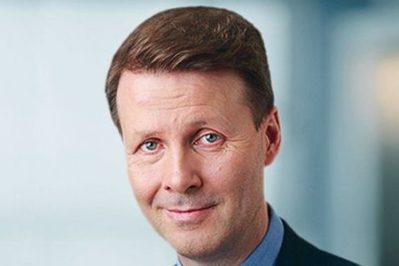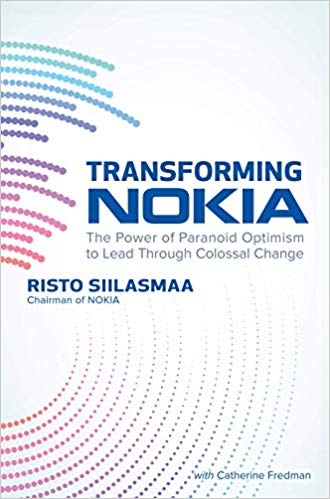In 2012, after more than a century of successfully reinventing itself, Nokia found itself falling behind, unable to compete in the expanding smartphone market. In this episode of Mastering Innovation on SiriusXM 132, Business Radio Powered by The Wharton School, Risto Siilasmaa, Chair of Nokia’s Board of Directors, elaborates on the challenges the company faced and how it regained its ability to adapt in an ever-changing technology landscape.
After finding early success in producing mobile phones, Nokia underestimated how important a strong central operating system would become within their devices, an oversight that left them vulnerable to disruption when the iPhone launched. After Siilasmaa became Chair in 2012, the company set new guidelines in place for rigorous scenario-planning exercises that would help it better peer into the future. Since 2012, Nokia has reinvented itself yet again, becoming one of the largest technology infrastructure companies and providing end-to-end networks across the globe.
An excerpt of the interview is transcribed below. Listen to more episodes here.
Transcript

Saikat Chaudhuri: Nokia has had such a fascinating history over 150 years: paper, rubber, cables, electronics, ITT Nokia, phones, and so forth. Now you focus on one piece of that, right? To get our listeners situated, what does Nokia do today in terms of the equipment and the infrastructure it provides?
Risto Siilasmaa: We are the only network infrastructure player that can provide an end-to-end network on a global basis. An end-to-end network means all the technologies that are required to build fixed networks, optical networks, copper networks, mobile networks. We provide that technology to operators and large enterprises.
Chaudhuri: All the corporations who need those networks, as well as the T-Mobiles, AT&Ts, and Bhartis, and so forth, they all use your equipment.
Siilasmaa: You can be pretty sure that whenever you do anything that sends a bit into the internet, somewhere along the way, it will go via Nokia equipment or Nokia software.
Chaudhuri: Very powerful — all the infrastructure that powers the internet and all the services that we enjoy. I want to ask you a little bit about the historical transformation and then get to the 2012 situation and how you managed to address that. How did Nokia manage to, over those 150 years, keep on reinventing itself over time before 2012? Moving from rubber, paper, rubber, electronics, to phones and network equipment. How did the company have the foresight to diversify, but also keep reinventing itself?
Siilasmaa: It is largely that there was always an R&D project underway that provided that next opportunity. Why they started those, I have no idea, but over time the company’s DNA changed to include that idea of being a serial transformer. When we had done it several times over 100 years, it started feeling natural to people. They believed that we could do it again, and when you believe, you can accomplish a lot of things.
Chaudhuri: What happened? How did Nokia lose the plot when it came to smartphones? What changed?
Siilasmaa: I’ll give you an example. When Nokia started with mobile phones, the first devices were, from today’s point of view, pretty stupid. They were definitely not smartphones. The amount of software on each phone was minimal, so it was quite affordable and sensible to customize the software for each new model to take into account the form factor and which customer or user group they were aimed at. The extra work of that customization was fairly small, but then as we got into smartphones, the amount of software in each device was huge. The value that the software provided to the overall device was the majority of the value, but Nokia kept that old operating model. The device was the king, and software was the slave.

If you think about a healthy software tree where the trunk is the core of the code, the code that will be used when you start the next project, Nokia branched that tree into numerous branches. Much of the work was spent on those branches. They were dead-end type of projects. The work that was done, it would not be used for any other device, whereas Linux, iOS, macOS, UNIX, Windows — for all those platforms, the operating system is at the core. Nokia operated differently. By the time the iPhone launched, the Symbian software tree had become an impenetrable hedge. My own cybersecurity company had been developing antivirus software for the Symbian platform since 2001, and it was the worst platform we ever developed on.
“Over time the company’s DNA changed to include the idea of being a serial transformer. When we had done it several times over 100 years, it started feeling natural to people.” – Risto Siilasmaa
Chaudhuri: This story sounds very familiar. When you think about the classic Kodak case, for example, the incumbent people are too quick to jump to, “Oh, why were they so foolish, they didn’t see that?” It’s not so simple. You’ve got a very successful company that has much of the market share and is absolutely dominant. On the one hand, you can say that we’re blinded in terms of what is important for the future of that industry, but on the other hand, we have a lot tied up and invested in those capabilities, resources, distributors, supply chain, and of course, customers that we have. It’s really difficult for me as a manager to think, “This is going to be the change which will actually disrupt my industry,” because there are many other changes that people are constantly trying to make. How do we deal with that?
Siilasmaa: There’s a toxicity to success and you need to think about that. You need to be afraid of the toxicity of success as you become successful. The more concerned you are about those toxic side effects, the more likely you are to avoid them. How do you avoid becoming complacent? How do you avoid getting trapped into all that extra baggage that you gather along the way? One aspect of that is that instead of just focusing on 100% on how you remain successful, you also spend reasonable amount of time and brain power thinking about, how could I fail? Nokia did this. In 2006, for example, there was a project where smart upcoming leaders were given the task to identify the 10 things that Nokia will miss next. Number one on that list was an iPod with a radio, i.e., an iPhone.
Chaudhuri: What happened with that idea? Why did it get stuck?
Siilasmaa: The prevailing wisdom, based on customer feedback, user group analysis, market research data, was that a very small portion of people would actually be willing to use a touch device. The belief was that we needed to cover the full spectrum of different form factors. So you need a full QWERTY keyboard, you need a numeric keyboard, you need devices where the display covers the keyboard and slides away to reveal the keyboard, you need Blackberry-type devices. Then you need a touch phone, and the touch phone is the new kid on the block. It’s not very interesting, yet we can easily catch up when somebody else launches something like that. What was not taken into account was the importance of the operating system and the competitiveness of the operating system.
“You need to be afraid of the toxicity of success as you become successful.” – Risto Siilasmaa
Chaudhuri: So the software was a key piece. When you came in 2012 and you observed the situation, what did you think and how did you react to it? You clearly saw what was happening and that somehow this ship had to be turned around.
Siilasmaa: I became a board member in 2008 and then I became chairman in 2012. As I became the chairman, my first action was to not think about, “How do we fix these problems?” I started thinking, “How do I help create an environment where we will be more likely to be successful in solving our problems?” Sort of one rung higher on the abstraction ladder. And the foundation for this change was trust. So how could I create trust in the board, which was sort of afraid because of recent events and had lost some of its trust in itself? We had overseen a tremendous decline in market gap. So how could I create trust both within the board and between the board and the management team?
We did a long list of things, but perhaps the most important one was that we created what we call the golden rules that define how we will behave. And then as we laid out that platform for behavior, we studied hand-in-hand with the management team, analyzing alternative scenarios going forward. The old model was pretty much that management had a plan, that plan was supported by the board, and there were no alternatives being discussed. So it was like the future was a dark landscape and there was one lit path that crossed that landscape. As we had failed to execute on that management plan for the past four years, the only thing the board really knew was that at least we would not walk down that path. But the rest of the landscape was covered by darkness.
So when we started doing this scenario work and created positive scenarios and negative scenarios where lit paths crossed that landscape, we sort of saw the overall view of what kind of terrain we had in front of us. And even if we knew that we probably would not walk to any of those spots, we knew we might go close to some of them. So we knew what could happen and started creating action plans for each scenario. We could ask, “Is this a positive scenario? Yes, it is. How do we increase the likelihood of this happening? What can we do today, tomorrow, next week, to increase the likelihood?” For a negative scenario, “How do we decrease the likelihood? What do we do if we find out that we are actually going down that path? What is our action plan?” And suddenly, we felt in control.
About Our Guest
Risto Kalevi Siilasmaa is the Chairman, founder and former CEO of F-Secure Corporation, an anti-virus and computer security software company based in Helsinki, Finland. Risto Siilasmaa is the founder of F-Secure and served as the President and CEO of the company until November 5, 2006.
Since then he has held the position of Chairman of the Board of Directors. He is also a Chairman of the Board of Nokia Corporation, Fruugo Inc and a member of the Board of Blyk Ltd and Mendor Ltd.
Siilasmaa is a member of Investment Council of Finnish Industry Investment Ltd, a member of the Board of The Federation of Finnish Technology Industries and a member of the Board of Directors, Confederation of Finnish Industries. He has received severals awards including Nordic Chairman of the year 2009, the Most Influential IT Leader 2007 and The Leader of the Decade 2003.
Siilasmaa holds a Master of Science degree from the Helsinki University of Technology.
Mastering Innovation is live on Thursdays at 4:00 p.m. ET. Listen to more episodes here.



